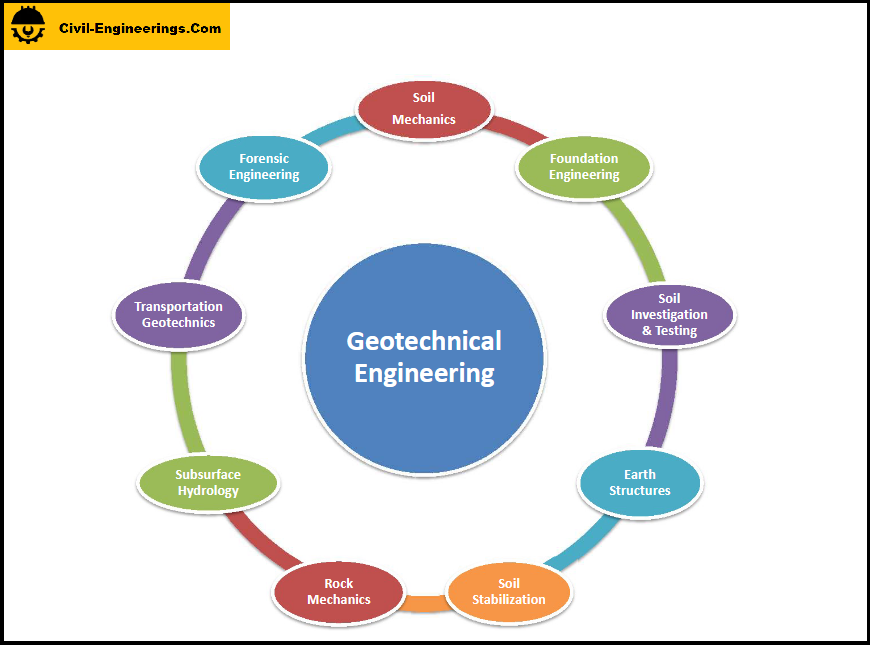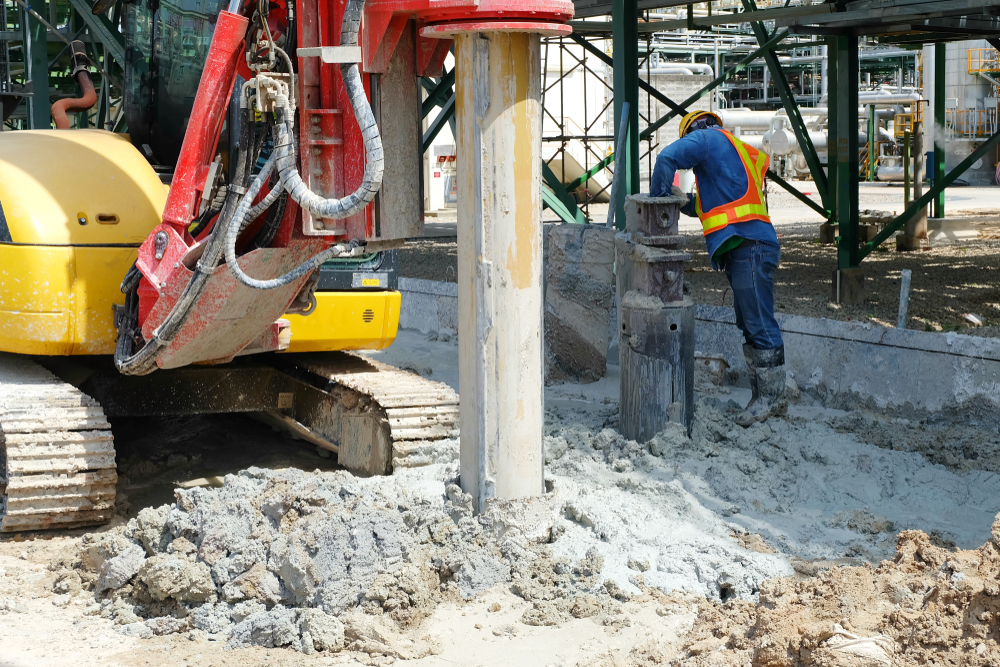The Facts About Geotechnical Engineering For Construction Projects Uncovered
The Best Guide To Geotechnical Engineering For Construction Projects
Table of ContentsGeotechnical Engineering For Construction Projects Fundamentals ExplainedUnknown Facts About Geotechnical Engineering For Construction ProjectsThe Definitive Guide for Geotechnical Engineering For Construction ProjectsThe Only Guide to Geotechnical Engineering For Construction ProjectsThe 7-Second Trick For Geotechnical Engineering For Construction ProjectsEverything about Geotechnical Engineering For Construction Projects
These attributes must be taken a look at by geotechnical engineers to forecast their activities under various conditions., making this analysis essential.A geotechnical designer will take a look at dirt to figure out the bearing capacity of the earth and advise proper structure kinds, such as shallow structures, deep foundations like stacks, or specialized remedies like floating structures for soft dirts. Recognizing the functions and activities of dirt and rock, along with how they engage with constructions that have actually been put up on or within them, is one of the main descriptions for why geotechnical engineering is crucial.
Ecological protection is completed through geotechnical engineering. Competence in air, water, and soil high quality upkeep is put to utilize by geotechnical designers to decrease the unfavorable impacts of projects.
Facilities growth, offshore design, tunnel construction, and deep structures. Risk-based design and multidisciplinary groups. These components will certainly keep the field advancing and guarantee its continued relevance in the years to find. To summarize, geotechnical engineering is a vital self-control that preserves the durability and integrity of civil infrastructure. Geotechnical engineers add to making building jobs effective all over the globe by comprehending the behavior of planet materials and using appropriate preparation strategies.
The Main Principles Of Geotechnical Engineering For Construction Projects
By taking a look at soil, rock, and subsurface problems, geotechnical engineers provide important insights that assist in the layout, construction, and maintenance of structures and facilities.

Not known Facts About Geotechnical Engineering For Construction Projects
Research laboratory screening: Figuring out the homes of dirt and rock. A number of high-profile building projects have actually successfully used geotechnical engineering to guarantee their stability and safety and security.

As a leader in geotechnical design, BECC Inc. is committed to delivering cutting-edge and effective options that satisfy the highest possible standards of high quality and security., a mechanical designer and rock hound.
Geotechnical Engineering For Construction Projects for Beginners
Terzaghi also developed the framework for concepts of birthing ability of structures, and the theory for prediction of the rate of negotiation of clay layers as a result of combination. Later on, Maurice Biot totally created the three-dimensional dirt debt consolidation theory, extending the one-dimensional model previously established by Terzaghi to extra general theories and presenting the collection of fundamental formulas of Poroelasticity.
Geotechnical designers examine and determine the properties of subsurface problems and products. They also design equivalent earthworks and retaining frameworks, tunnels, and framework structures, and might monitor and assess sites, which might better include website monitoring along with the danger assessment and reduction of natural hazards - Geotechnical Engineering for Construction Projects. Geotechnical designers and design geologists perform geotechnical investigations to acquire information on the physical properties of soil and rock underlying and beside a website to develop earthworks and structures for suggested frameworks and for the repair service of distress to earthworks and frameworks brought on by subsurface conditions.
The smart Trick of Geotechnical Engineering For Construction Projects That Nobody is Talking About
Geologic mapping and analysis of geomorphology are commonly finished in assessment with a geologist or design rock hound. Subsurface expedition usually includes in-situ screening (for instance, the common infiltration examination and cone penetration test). The excavating of test pits and trenching (particularly for finding mistakes and slide aircrafts) might additionally be used to discover soil conditions at deepness. Still, they are often utilized to enable a rock hound or designer to be decreased into the borehole for direct aesthetic and hand-operated evaluation of the dirt and rock stratigraphy. Different soil samplers exist to meet the demands of different engineering jobs. The conventional penetration examination, which utilizes a thick-walled split spoon see this sampler, is the most usual method to collect disrupted samples.

If the user interface in between the mass and the base of an incline has an intricate geometry, slope stability evaluation is hard and numerical service methods are needed. Normally, the interface's exact geometry is unknown, and a simplified user interface geometry is presumed. Finite inclines call for three-dimensional designs to be assessed, so most inclines are evaluated assuming that they are considerably wide and can be represented by two-dimensional versions.
Not known Details About Geotechnical Engineering For Construction Projects
The empirical approach may be defined as follows: General expedition enough to establish the rough nature, pattern, and homes of deposits. Assessment of the most potential conditions and the most undesirable conceivable variances. Developing the layout based on a functioning hypothesis of actions anticipated under one of the most likely conditions. Choice of amounts to be observed as construction earnings and calculating their anticipated worths based upon the working hypothesis under one of the most unfavorable conditions.
Dimension of amounts and assessment of actual conditions. It is inappropriate for tasks whose style can not be altered during building and construction.